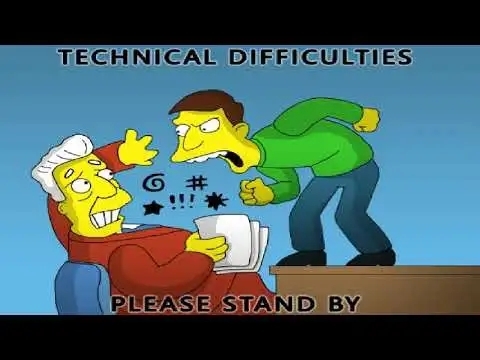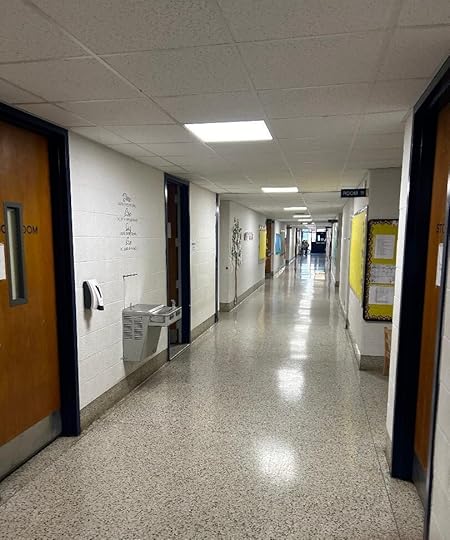A Déjà View FAQ!
 FAQ me.
FAQ me.Well, I did a Frequently Asked Questions for Danger Peak, so I suppose I have to do it again for my new novel, Déjà View. Needless to say, this blog contains major spoilers to my book, so if you haven’t read it yet, you might want to skip this one. Here are the questions, in no order:
Is Déjà View autobiographical?
This is a question I was also asked a lot when I was promoting Danger Peak, and while I answered “Yes” (or “somewhat”) about my first book, I would say this book is even more autobiographical. In fact, it’s probably the most autobiographical thing I’ve ever written—particularly the first half. Almost everything that happens in the first half happened to me in real life, even specific conversations the characters have. For instance, there’s an early conversation in the first chapter when Joe asks Bobby if he thinks there’ll ever be a Black president, and Bobby makes a bad joke by saying, “Probably not. Why do you think they call it The White House?” I knew many people were going to think this was a lame reference to Obama becoming president years later, but this was a literal conversation I had with my friend in early 1989 after George Bush became president (the first/better-ish one). And no, Bobby—and I—weren’t being racist. It wasn’t a joke about race; it was a bad pun about wordplay. Most of the rest of the stuff that happens—with entertaining exaggerations, of course—actually happened to me (again, in the first half of the book), including that odd skeleton scene, which brings me to the next question.
So what’s with the skeleton?
This is probably the question I get asked the most. What was the point of Bobby seeing the skeleton in the classroom, and how does that relate to the rest of the book? Believe me, I wrestled with whether or not to keep this scene in the novel (I did delete an entire chapter, after all), but in the end, I decided to keep it, for the following reasons:
At this point in the book, nothing terribly exciting is happening (it’s still what I call the “normal half” of the book), and I knew readers might be getting impatient for the “good stuff,” so I added this creepy scene to further let the readers know that something spookular is coming and that things aren’t quite right in Bobby’s world, despite outward appearances. This is similar to Chuck E. “biting the big one” at his birthday party.As I explained in the last question, this actually happened to me, believe it or not (and I know many won’t), though it happened after religion class, not a Boy Scout meeting, as in the book. (Maybe the nuns pumped me with too much guilt that afternoon?) I was waiting for my Mom to pick me up and wandered down a deserted, darkened hallway in the school/church where I attended catechism. At the end of that hallway, I spotted a skeleton through the door’s glass window, and in my fevered imagination, I saw it bang its skeletal fist against the chalkboard, demanding I answer its question, as if it was some twisted teacher of mine. I ran down the other end of the corridor, never looking back. Now, in retrospect, that skeleton was almost certainly a prop for the biology/science department, but to explain the movement? I had a very overactive imagination as a child, which brings me to my last point.I’m sure you’ve heard of unreliable narrators, but I wanted Bobby to be an unreliable protagonist. No one believes him about the skeleton, and, likewise, no one believes him when he starts seeing his “déjà view” visions. I wanted the reader to question him, thinking, “Well, is he really seeing these repeated visions of his, or are they all in his mind, like the skeleton?” There’s a reason why the first proper chapter (after the Prologue) of this book is titled “Imagination Games.” In that chapter, Bobby literally sees Joe’s jungle gym transform into an interstellar starship (also based on a real memory), so in a way, I was planting the seeds of doubt in the reader about trusting this kid. I admit I may not have succeeded! But I’d like to think I gave it the ol’ college try.Here, btw, is the actual hallway where I saw that skeleton in one of the classrooms. (My daughters now also attend this school for catechism, which is how I was able to get the photo.)
 It’s much scarier when it’s dark.
It’s much scarier when it’s dark.How exactly does burying the time capsule allow the Doubles to cross over?
I toyed with the idea of explaining exactly how the time capsule allowed the Doubles to cross over in that giant exposition scene between Dr. Pann and Bobby (you know the one if you’ve read the book), but the more I thought about it, the more I realized no explanation I could come up with would be satisfying, since it’s simply not logical. (This is sci-fi, after all.) Would it make more sense saying that the time capsule was somehow magical and opened up a wormhole between dimensions in Bobby’s yard? Nope. So I took a page from my favorite movie, Groundhog Day, which also doesn’t waste time with an explanation for its supernatural elements. Even though the studio insisted on it, there’s no explanation given for why Phil Connors gets caught in a time loop. It just is. Not only is that explanation more Zen-like (there is no explanation at all), it’s more satisfying to me, because it can be whatever people want it to be. They can project their own reasons and rationale to the story. (For me, God is forcing him to become a better person in order to continue his life.) And, again to satisfy the studio, screenwriter Danny Rubin did write a scene explaining the time loop that director Harold Ramis promised he wouldn’t film (and didn’t). If you’re curious, Phil was cursed by a spurned ex-lover. She used a voodoo doll or something. I read it and don’t remember the entire thing. Again, it wasn’t very satisfying. Hence, no explanation given in the movie proper, or my novel either.
Why do the Doubles have “X”s on the backs of their hands?
No, despite popular belief, it’s not a reference to Generation X. Originally, it was just a way to discern which ones were regular people and which ones weren’t. As the idea developed, however, I devised a clever way (if I do write so myself) to use the “X” as a means of escape for Bobby and Anna. Thinking back on the origin of the “X” though, I suppose I got the idea from my sister—without her realizing it. In the late ‘80s and early ‘90s, we used to spend Friday nights watching the T.G.I.F. lineup on ABC (Family Matters, Full House, Just the Ten of Us, and, our personal favorite, Perfect Strangers) until one night, she wasn’t home, and I realized I had the T.V. to myself. At first, I was thrilled (“I can flip the channels during the commercials now!”), but it quickly—and, perhaps, unsurprisingly—became lonely. When my sister returned from her “nights out,” I noticed she had “X”s on the backs of her hands drawn with black marker. This was because she was going to all-ages hardcore/punk shows, and since she wasn’t old enough to drink, they marked the backs of her hands so the bartenders wouldn’t serve her. So, in a way, my sister started out as a child watching silly family sitcoms with me in my bedroom, and then she entered “the Real World” (or at least a teenaged approximation of it) and came back a different person. She was grown up, and the only evidence were those blasted “X”s. Of course, growing up is the major theme of Déjà View.
Will there be a Déjà View 2?
Short answer: Nope! Long answer: I already wrote Déjà View 2…and 3! (when I was a kid) And they weren’t very good! (This was the exact same answer I gave for my Danger Peak FAQ, so did you experience déjà vu?) But I’ll save that for next week’s blog.
MTP
P.S.: Next week’s blog: My Original Vision for Déjà View (and Its Sequels)
P.P.S.: Déjà View is now available on Amazon and Barnes & Noble:
AmazonBarnes & Noble


